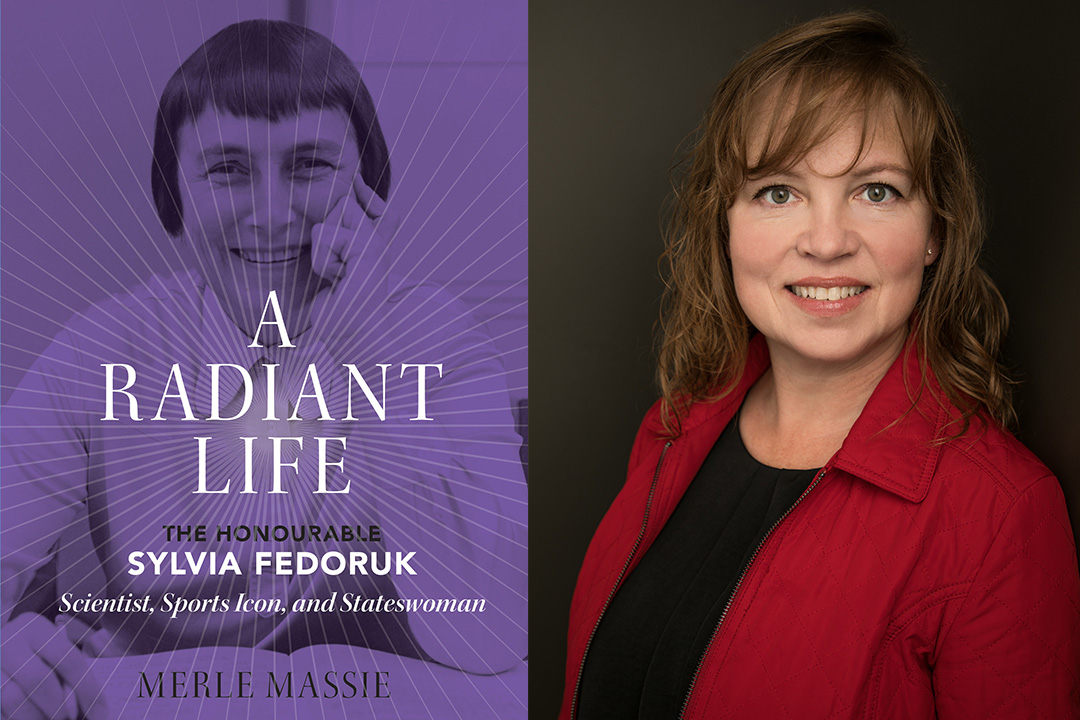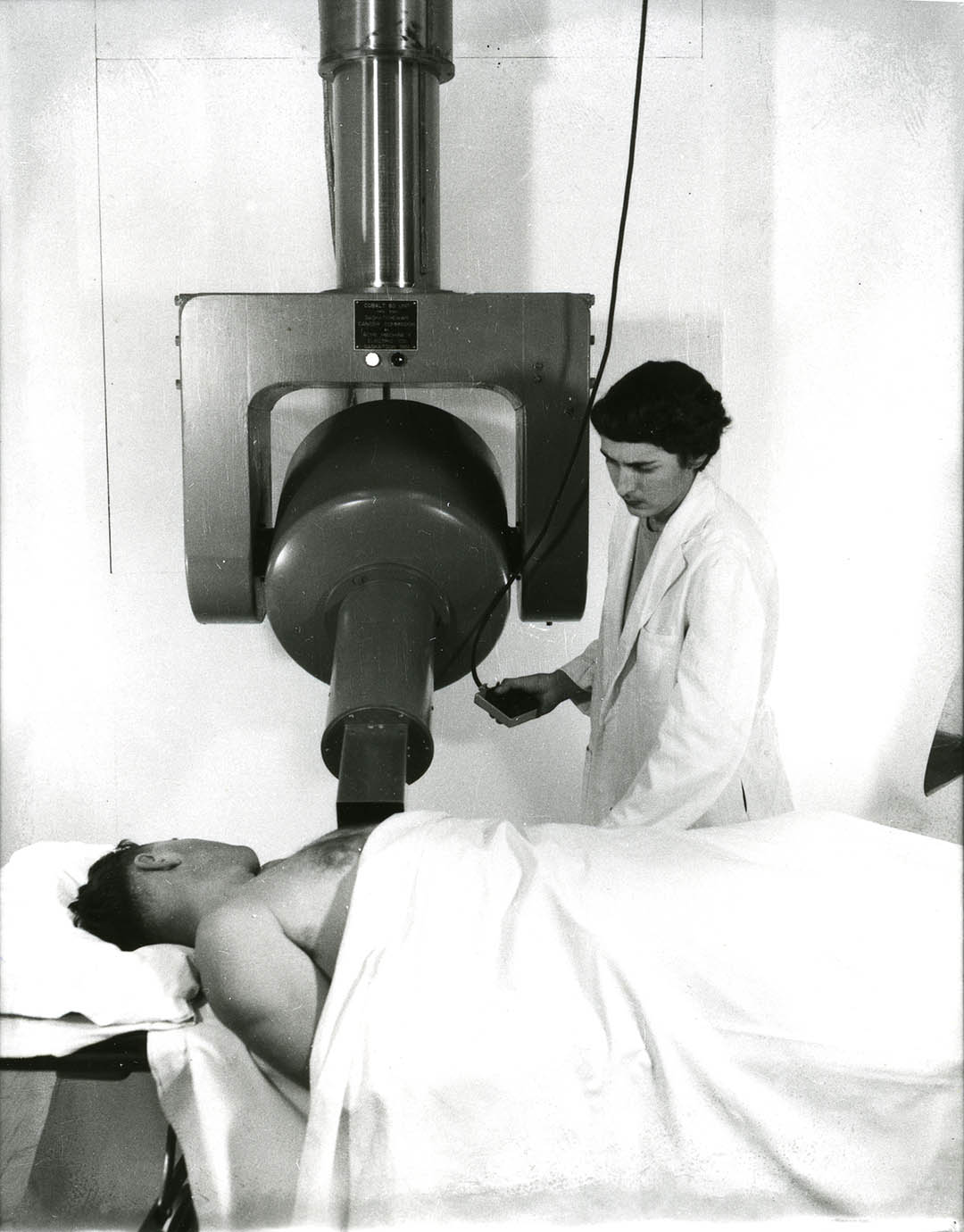
New biography sheds light on Fedoruk’s 'radiant life'
A just-released biography—A Radiant Life—highlights the many outstanding contributions to Canada and the world of Sylvia Fedoruk (1927-2012), a trailblazing medical physicist at the University of Saskatchewan (USask) best known for co-developing the cobalt-60 technology that revolutionized cancer treatment around the globe.
By USask Research Profile and ImpactA pioneering woman of science—one of the few Canadian female medical physics researchers in the 1950s—Fedoruk also went on to serve as the university’s first female chancellor (1986) and the province’s first female lieutenant-governor (1988).
The well-researched book—the first biography of this distinguished Canadian—is written by award-winning author Dr. Merle Massie (PhD), a USask-trained historian who now co-ordinates undergraduate research across the university.
With help from University Archives, Massie combed through Fedoruk’s collected papers and other artifacts and spoke with many people in the USask community—including Dr. Stuart Houston (MD), Dr. Gordon Barnhart (PhD), and Roy Romanow, former premier and a senior policy fellow in political studies—to present a compelling and nuanced portrait of Fedoruk’s public and private life.
At a time when there were few highly placed female leaders in academe, Fedoruk excelled as a USask competitive student-athlete (a “rampaging amazon” as she called herself), graduate student, cancer radiation researcher, professor in both physics and medicine, board of governors member, and eventually chancellor, the ceremonial head of the university. Her remarkable career touched on many of the scientific, political and social challenges of her time, including nuclear energy issues, women’s equality, and gay rights.
“In many ways, this is a University of Saskatchewan story,” said Chancellor Emerita Dr. Vera Pezer (PhD), a long-time friend of Fedoruk. “Saskatchewan and the university helped to shape Sylvia Fedoruk, and she in turn had a profound influence on them—they bettered each other.”

As a graduate student of medical physicist Dr. Harold Johns (PhD), Fedoruk established the world standard for radiation depth-dose measurements to treat tumours deep inside the body. The cobalt-60 therapy unit was a groundbreaking advance in cancer treatment innovation that positioned USask to become a leader in areas of nuclear medicine and biomedical imaging that it is today. The university’s Sylvia Fedoruk Canadian Centre for Nuclear Innovation honours her contributions.
A strong supporter of women in science, Fedoruk was the first woman to join the Atomic Energy Control Board of Canada, an advisor to the federal government on radioisotopes, and a consultant with the International Atomic Energy Agency throughout the 1960s. Due to her national profile, she was included in Queen Elizabeth II’s 1977 visit to Ottawa where Fedoruk and the Queen chatted about nuclear issues.
Insights into Fedoruk as a person include that she loved pranks, poker, and pickling, as well as fishing, curling, and collecting curling pins from all over the world. She was warm, generous and had a gentle humour. She was also very hard on herself, with a propensity to over imbibe alcohol.
Massie devotes a fascinating chapter to the controversy around an openly gay USask art student’s attempt to “out” Lieutenant-Governor Fedoruk—whom he presumed was a lesbian—and the reaction of the university, the media and the government in a province riven with homophobia. The complex controversy, which resulted in the student’s expulsion, pitted privacy issues against freedom of speech and artistic expression, and underscored the widespread feeling of loyalty toward Fedoruk.
“In some ways, Syl was the victim in all of this,” said Pezer. “She was given bad advice, and the university was left trying to deal with it. I think the university was as much a victim of this as Syl was. If this kind of episode had happened today, it would not have caused the flurry that it caused then. Twenty-five years later, attitudes have changed so significantly.”
Massie states that Fedoruk represents “the essence of Saskatchewan, of building a life with world impact in a place well used to being forgotten,” noting the number of lives that Fedoruk’s work touched in Saskatchewan and around the world was “uncountable, but a safe estimate would be millions.”
At Fedoruk’s funeral, then-Premier Brad Wall mused that she must be “a character in a novel” since her life “couldn’t possibly be true of one person.”
The book will be launched Sept. 15th at a USask-hosted online public event at 7 pm, moderated by Pezer. Register here.

